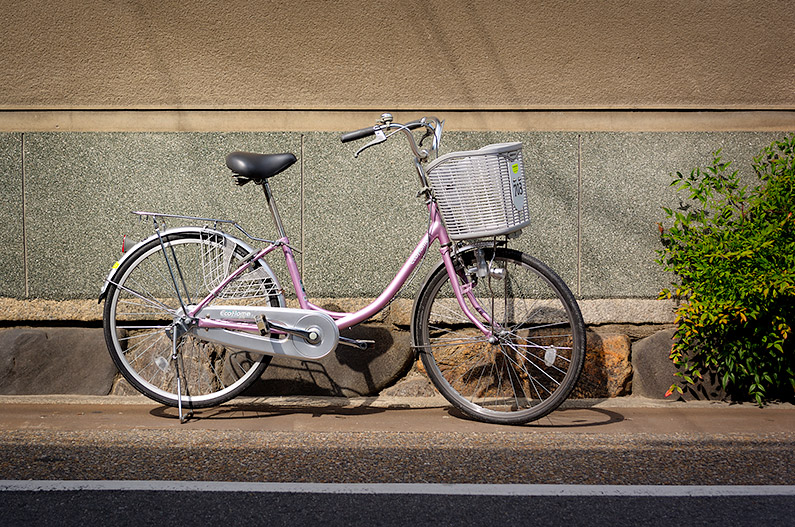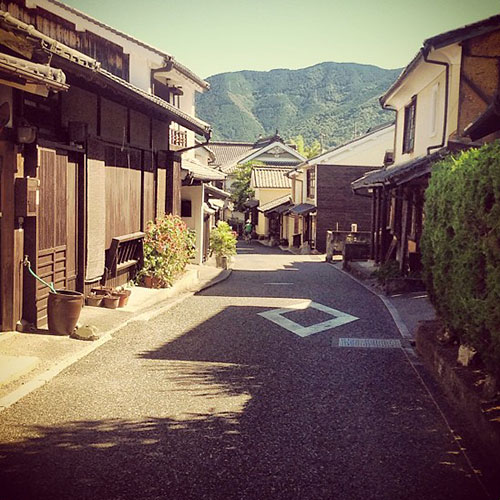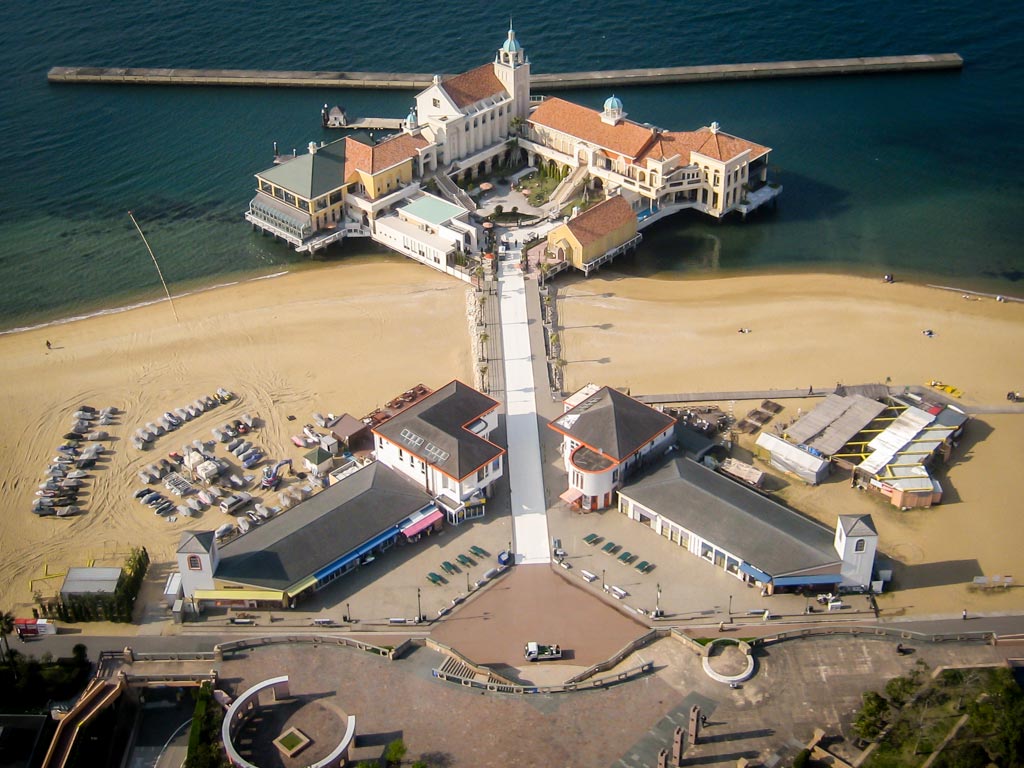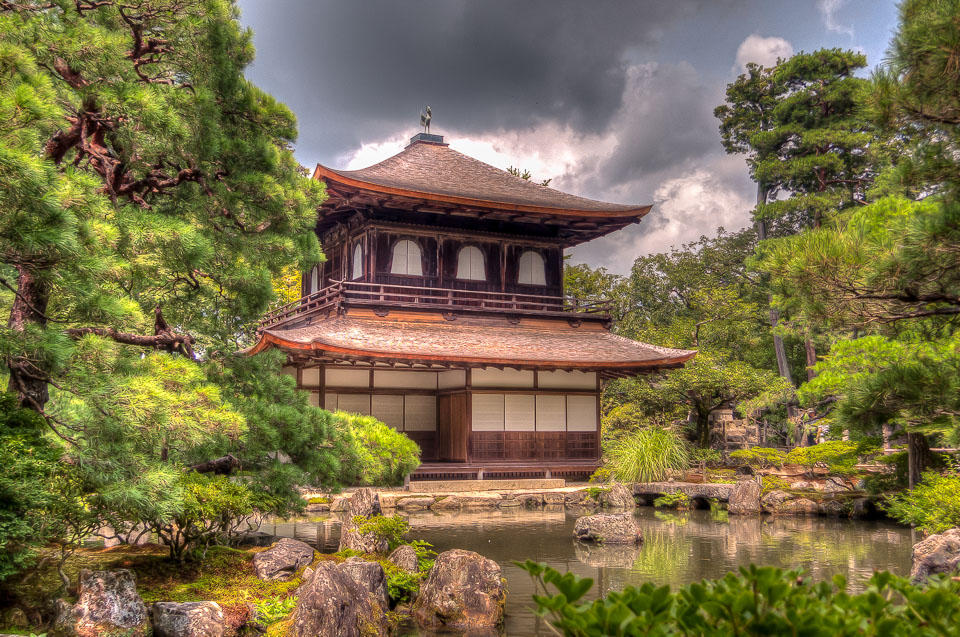Koyasan & Danjo Garan: Travel Guide
Share

Mount Koya 「Kōyasan, 高野山」 is a 1200 year old sacred temple town in the mountains of northern Wakayama Prefecture. There are over 100 temples in Koyasan. Koyasan is a UNESCO World Heritage area, part of the Sacred Sites and Pilgrimage Routes in the Kii Mountain Range. The site includes Yoshino and Omine in Nara Prefecture and Kumano Sanzan in Wakayama Prefecture.
Danjo Garan at sunrise
In this article:
Koyasan is close to Nara, Kyoto and Osaka. The “Pilgrimage Route” part of its World Heritage title refers to an ancient road that linked this area to Nara and Kyoto (both previous capitals of Japan). In 816 the Shingon Buddhism sect established Koyasan.
There are over 50 temples in Koyasan offering accommodation to visitors. I stayed for a night at Renge-in 「蓮花院」 in the middle of town. Koyasan temple lodgings offer an amazing experience - staying at a real Japanese Buddhist temple, eating their traditional cuisine and taking part in their prayers.
Koyasan has many sites to visit, and unfortunately I only stayed for one night. That said, it was plenty of time to enjoy the Danjo Garan and get up close to the Daimon (The Grand Gateway).
The Grand Gateway to Koyasan
Daimon「Large Entrance Gate, 大門」
This massive gate, over 25 metres high, is the formal entrance to Mount Koya. From Koyasan Train Station, you can catch a bus directly to the gate. Otherwise, it is an easy 15 minute (1 kilometre) walk or 5 minute bicycle ride from Danjo Garan.
The Daimon is a zuishi-mon「随身門」 style tower gate, like the gates at Daigo-ji in Kyoto and Kanda Myojin in Akihabara, Tokyo. Inside the two main pillars of the gates are fierce looking Niō statues, guardians of this sacred area.
Daimon: 25m high entrance gate to the mountain complex
Daimon, the grand gateway
Important cultural treasureSituated at the west end of the basin of Kōyasan, it is the western entrance to Kōyasan. Roads from Kinokawa valley and Aritagawa valley met here. The gateway was reconstructed in 1705. Recently it was repaired with the opening of the motor-car road in recent time. It has got activity as an important entrance to Koyasan.
Inscription on sign by Wakayama Prefecture Board of Education 「教育委員会」 and Kongobu-ji Head Temple 「総本山金剛峯寺」
Danjo Garan Temple Complex 「壇上伽藍」
Danjo Garan is the central temple complex of Mount Koya. Secret Shingon Buddhism training has been taking place here for hundreds of years. At sunset while taking photos a long line of monks proceeded into the temple complex, their chants echoing around the grounds.
Konpon Daitō 「Great Stupa, 根本大塔」
「Konpon Daitō, 根本大塔」 The Great Stupa is nearly 50m tall, dominating the Danjo Garan complex
This massive pagoda is almost 50 metres high, the The Great Stupa is the towering icon of Danjo Garan. The colossal stature of this building is mesmerising. Photos just can’t do it justice. The bright vermillion coloured exterior and tall spire seen almost anywhere on the temple grounds. I visited this site twice in two days, once in the afternoon and once at sunrise the next morning, trying to capture the grandeur of The Great Stupa.

Danjo Garan at sunrise: Great Stupa in the middle, Kon-dō main hall on the right and Mei-dō hall on the left
Kon-dō 「Golden Hall, 金堂」
Kon-dō「Golden Hall, 金堂 」
This building was one of the first built at Koyasan, however it’s been destroyed and rebuilt 7 times. For Buddhists monks and the entire community in the mountain complex the Kon-dō is an important building, used for many Buddhist services. The building is one of the largest in the Danjo Garan.
Tōtō 「Eastern Stupa, 東塔」
Toto 「Eastern Stupa, 東塔」
The original Eastern Stupa was originally built in 1127. It was destroyed by fire in 1843, and was rebuilt over 100 years later, to commemorate the death of Kukai - founder of the Shingon Buddhism and of Mt Koya.
Autumn leaves, next to the Eastern Stupa
I took this trip in late early October, but had originally planned this trip for November - to see the colours of autumn surrounding Japan’s most stunning locations. Most of the places I visited on this trip (like Hakone Shrine) were still bright with the green of summer, but here in Koyasan, which is at a much higher elevation, the leaves had already started to turn that classic rusty-gold colour.
Pathway from Mount Koya township to Danjo Garan complex
Fudō-dō 「Fudō Hall, 不動堂」
The oldest structure on Mount Koya
This building is over 800 years old. The Fudō-dō is the oldest building in Koyasan, built in 1197. Enshrined within is Fudō-myō 「God of Fire, 不動明王」 and the Hachidai-Doji 「the Eight Young Boy Attendants, 八代童子」, sculptures of these deities were created around the time of initial construction of this hall.
Fudō-dō 「Fudō Hall, 不動堂」
The hall is built in the shoin-zukuri 「書院造」 style of Japanese architecture of the Kamakura Period 「Kamakura-jidai, 鎌倉時代」.
Saito 「Western Stupa, 西塔」
Saito 「Western Stupa, 西塔」
The Saito is a tahōtō 「多宝塔」 style pagoda (same as the massive Konpon Daito) and stands at 27 metres tall. This stupa was originally built in 886, the present structure was built in 1834.
Myō Shrine 「Myō-jinja, 御社」
Myo Shrine 「Myō-jinja, 御社」
Myō-jinja is home to Niu-myōjin (丹生明神, the royal mistress of Mount Koya) and her son Kariba-myōjin (狩場明神, hunter guardian of the mountain’s forests). Like much of Danjo Garan, the structures here are shaded in the forest’s cedar trees.
This torii (shrine gate) is the entrance to Myō-jinja
Rokkaku-Kyozo 「Hexagonal Depository of the Scriptures, 六角経蔵」
Rokkaku-Kyozo 「六角経蔵」
Aizen-dō 「Aizen Hall, 愛染堂」 and Daie-dō 「Daie Hall, 大会堂」
Left: Aizen-dō 「Aizen Hall, 愛染堂」, Right: Daie-dō 「Daie Hall, 大会堂」
The Aizen-dō was first built in 1334, the current building built in 1848. Enshrined in this building is Aizen Myō-ō 「愛染明王」 the god of love. The Japanese kanji character 愛 (ai) is roughly translated to “love”.
In the small town of Mount Koya
Koyasan is a small town, just a few thousand people call the historic mountain town home. Many of the homes and shops were built in the Edo Period (similar to the streets of Narai-juku along the Nakasendo). There are many temples offering lodging to tourists, most located in the center of town.
Temple lodging - Henjoko-in 「遍照光院」 - on Koyasan’s main street
Within a small area there are over 50 temples offering accommodation. Most of these are real working Buddhist temples, and visitors enjoy traditional Buddhist meals and can take part in morning prayers.
Small altar on Koyasan’s main street
Map of Koyasan
UNESCO World Heritage: Koya-san map
There is much more to see in Mount Koya than just the Daimon and Danjo Garan. Other sites include:
- Okunoin Temple
- Kongobuji Temple
- Reihokan Museum
- Daishi Kyokai
- Tokugawa Mausoleum (Tokugawa Reidai)
How to get to Mount Koya and Danjo Garan
Half the fun of going to Mount Koya is the different modes of transport used to get to this remote mountain town. A train is taken from Osaka to a station near Koyasan. A cable car is then taken up the mountain to Koyasan station, then a short bus ride into the town of Koyasan.
The first leg of the journey starts at Shin-Imamiya Station 「新今宮駅」 or Namba Station 「難波駅/なんば駅」 in Osaka. Koya-san can also be reached from Kansai Airport, Kyoto, Nara and Tokyo, see the official Nankai Railways Koyasan access page (English) for more details.
At either Shin-Imamiya or Namba Station, find the Nankai Railway ticket office. A convenient Koyasan-World Heritage Ticket can be purchased here, which last for 2 consecutive days (day 1 is the day you purchase the ticket, through to the end of the next day). At the station, there is a sign in English with full details of the tickets available.
The ticket best option costs ¥3,400 for a limited express train to and from Koya-san station. This ticket not only provides discounted train travel, but also covers the cost of the cable car and bus to get you to the town of Mount Koya, as well as discounted entry to many sites. See the official Nankai Railways Koyasan World Heritage Ticket page (English) for full details.
Nankai Railway ticket office Shin-Imamiya Station
From Shin-Imamiya or Namba Station you will take a train on the Nankai line to Gokuraku-bashi Station 「極楽橋駅」. The train trip takes about 90 minutes.
Gokurabashi Station
At Gokuraku-bashi Station, change to the cable car. The signs are clear and easy to find, and the cable car service usually departs shortly after the train arrives, so make your way straight to the cable car. The cable car takes about 5 minutes along a steep climb to Koyasan station.
Cable car at Gokurakubashi Station
At Koyasan station, exit the station and choose a bus. The bus timetable is closely linked to the arrival of the cable car, so head straight to the buses. For details on riding the bus, see the official Koya Town Office bus page (English).
Bus stop at Koyasan Station
Bus to Koyasan
Bicycle hire
Although the World Heritage ticket covers the buses in Koyasan, I prefer to ride a bike when available. In the middle of town at the Shukubo Association’s Central Information Office, bicycle hire is available. It costs ¥400 for the first hour, then ¥100 per 30 minutes. Reservations can be made by phone (the office have staff who can speak English) by contacting 0736-56-2616 from 9AM to 5PM.
I traveled at an off-peak time and didn’t reserve a bicycle, and there were plenty available on the day.
Mt Koya’s Central Information Center & Shukubo Temple Lodging Association
Opening hours and admission cost
Daimon and Danjo Garan are open sites - there are no “open hours”. I took full advantage of this and photographed Danjo Garan at sunset and throughout the night, then again at sunrise (around 4:30AM).
The Konpon Daitō 「Great Stupa, 根本大塔」 and Kon-dō 「Golden Hall, 金堂」 are open for entry from 8:30AM to 5PM and cost ¥200 each to enter. With the Koyasan World Heritage ticket, entry is discounted by 20%.
Traveler’s tips
- Hire a bicycle!
- Stay at a temple, and spend at least 1 night/2 days in Koyasan. You could see all of Koyasan over 2 nights/3 days. I spent only 1 night here, and will definitely go back to see Kongobuji Temple, the Tokugawa Mausoleum and the Okunoin area.
- Allow plenty of time to get to and from Koyasan, the one-way trip from Osaka to Koyasan can take 3 hours or more, depending on transfers.
When to visit (events & festivals)
Many important Buddhist rituals take place at Koyasan.
March 21: Sho-Mie-Ku
Anniversary of Koyasan’s founder Kukai’s “entrance into eternal meditation”. Chief priests from every temple in Koyasan perform a memorial service at Okunoin. With a large procession of priests the ceremonies are said to be quite spectacular.
May 3-5 and October 1-3: Kechien Kanjo
Buddhist monks and priests perform an austerity ritual which aims to realise the natural spirituality and wisdom of Buddha that is within us all. The ceremony is performed at the Kon-dō of Danjo Garan.
August 13: Mando- Kuyoe (Candle Festival)
Along the 2km sacred approach to Okunion 100,000 candles are placed to pray for the souls at those buried at this important graveyard, as well as for one’s own ancestors.





Facebook
Follow Japan Travel Mate